The Dragon’s Voice
Welcome to the November issue. In fact, this is the first issue since May. This is down to my ill health which, hopefully, will recover after yet another visit to our local wonderful hospital in Bangor.
In this issue we have more from Bridget Geoghegan on her researches on local memorials, this time on the memorial at Llandegfan on Angelsey, and a review of the new book of photographs of important WWI sites throughout the globe. It was a world war, after all.
Llandegfan War Memorial
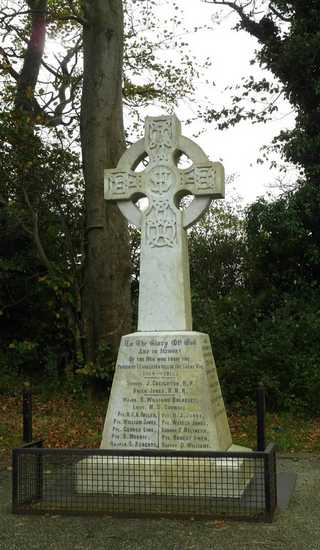
The Memorial outside the Village Hall
Great War 1914 – 1918
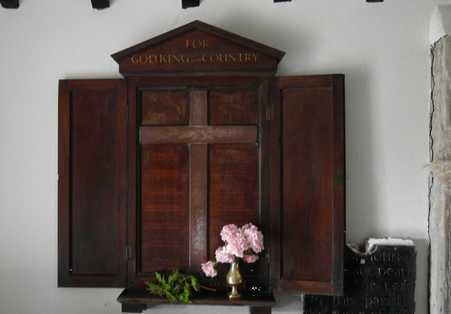
The shrine in the porch of the church of St Tegfan, Llandegfan
Llandegfan War Memorial Summary WWI and WWII
There are 14 men remembered on the War Memorial outside Llandegfan Village Hall; 13 on this shrine (Lieut M. S. Schwabe is not remembered).
This list also includes four men who are named in the churchyard of St Tegfan - two are commemorated on family graves; one died too late to be a war casualty and one had an interesting military career.
1 – Stoker. J. Creighton, R.N.
Stoker John Creighton, 6606S, Royal Naval Reserve, drowned when HMS Indefatigable sank at the Battle of Jutland on Wednesday 31st May 1916; age 21; commemorated on Portsmouth Naval Memorial, and on family headstone in churchyard of St Tegfan, Llandegfan. Also listed as Christopher Creighton and John Craghton
2 – Owen Jones, R.N.R.
Petty Officer Owen Jones 1748D was a career man in the Royal Navy; son of Margaret and Owen Jones of Crossing Terrace, Llanfairpwll; married to Grace Jones of 22 Dale Street, Menai Bridge; killed in action when HMS Invincible was sunk by her own magazine exploding at the Battle of Jutland, Wednesday 31st May 1916; age 45; commemorated on Portsmouth Naval Memorial Llandegfan War Memorial Summary WWI – 3
3 – Major. R. Williams Bulkeley,
Major Richard Gerard Wellesley Williams-Bulkeley, Grenadier Guards until February 1915 when he joined the newly inaugurated Welsh Guards; son of Lady Magdalen and Sir Richard Henry Williams-Bulkeley of Baron Hill, Beaumaris; husband of Victoria Alexandrina Stella Williams-Bulkeley; father of 3 children; wounded in action, sent back for home duties and died Thursday 28th March 1918 at a London Nursing Home; age 31; buried East Finchley cemetery London, also commemorated by East window in church of St Mary & St Nicholas, Beaumaris
4 – Lieut. M. S. Schwabe,
Lieutenant Maurice Salis Schwabe, served as Maurice Shaw; brought up in Middleton Manchester; Glyn Garth, built by his grandfather, was the family holiday home and later the Bishop’s Palace; educated Marlborough College; volunteered with the Highland Light Infantry, Transport Officer; possibly shot by German Prisoners of War who mistook him for a traitor (he spoke fluent German), died on Thursday 30th September 1915; age 44; buried Le Tréport Cemetery, France. His Aunt lived at Garth y Don, Llandegfan and probably asked for him to be named on the War Memorial.
5 – Pte. H. S. H. Fuller,
Private Harry Stephen Hugh Fuller, born in Enfield Lock Middlesex, moved to Llandegfan to live with his grandparents; a baker by trade; married to Mabel Madeline Jones and lived at 19 Mason Street Bangor; first served with the Army Service Corps, later Private 29316 7th Battalion East Yorkshire Regiment; killed in action Sunday 31st March 1918; age 29; buried in Bouzincourt Ridge Cemetery, France
6 – Pte. H. J. Jones,
Private Hugh John Jones 20583 14th Battalion, Royal Welsh Fusiliers, born Criccieth, lived at Bryn Teg Llandegfan; killed in action Friday 24th December, 1915; age 22 (the same day as his brother died, Private Robert Evan Jones 20432, also 14th Battalion RWF); buried Rue-du-Bacquerot (13th London) Graveyard, France
7 – Pte. William Jones,
Private William Jones 25965 17th Battalion, Royal Welsh Fusiliers; lived at Penmon (or Penmaen) Llandegfan; died of pneumonia whilst in training camp in Llandudno on Sunday 30th May 1915; age 34; buried in the churchyard of St Tegfan, Llandegfan (CWGC commemoration, private headstone)
8 - Pte. Walter Jones,
Private Walter Jones 20932 14th Battalion, Royal Welsh Fusiliers; adopted son of Mrs G Jones, lived at Penrorsedd Llandegfan; killed in action at the Battle of Mametz Wood Monday 10th July 1916; age 24; commemorated on the Thiepval Memorial and on family headstone at Capel Barachia, Llandegfan
9 – Pte. George Line,
Private George Line 39182 9th Battalion, Royal Welsh Fusiliers; son of Elizabeth and William
Pennington Line, born in Kendal Westmoreland, enlisted in Menai Bridge; killed in action at Ypres on Sunday 4th November 1917; age 29; buried Bus House Cemetery, Belgium. Also listed as George Lyne
10 – Gunner. E. Molyneux,
Gunner Edward Molyneux 310537 144th Heavy Battery, Royal Garrison Artillery; eldest son of Mr E Molyneux of Brynteg Terrace, Llandegfan; worked at Penrhyn Castle Gardens; died on Sunday 18th November 1917 of wounds received on 16th November; age 20; buried Tincourt New British Cemetery, Somme, France and remembered on the family headstone in churchyard of St Tegfan, Llandegfan, Llandegfan War Memorial Summary WWI – 4
11 – Pte. D. Morris,
Private Daniel Morris 22175 20th Battalion, The King’s (Liverpool) Regiment; born in Llandegfan, family lived at Cae’r Ffynnon Llandegfan, enlisted in Liverpool where he probably worked; was reported missing at the Battle of the Somme, later declared killed in action Sunday 10th July 1916; commemorated on Thiepval Memorial and on family headstone in churchyard of St Tegfan, Llandegfan
12 – Pte. Robert Owen,
Private Robert Owen 49013 17th Battalion, Royal Welsh Fusiliers; born Llandegfan, family lived at Bryn Cottage Llandegfan, enlisted in Altrincham Cheshire; killed in action Friday 6th September 1918; age 26; commemorated Vis-en-Artois Memorial, France and on family headstone in Capel Barachia, Llandegfan
13 – Sapper G. Roberts,
Sapper George Roberts 146835 12th Field Company, Royal Engineers; born Llandegfan, family lived at Bryniau Duon Llandegfan, married to Mrs Margaret E Roberts of West Lynne, 1 Charlton Street, Llandudno; killed in action Thursday 6th September 1917; age 29; buried Philosophe British Cemetery, France; also remembered on family headstone in churchyard of St Tegfan, Llandegfan
14 – Sapper D. Williams
Driver David Williams 63045 Signal Department, Royal Engineers; son of William Williams, family lived at Penlon Llandegfan (later Tynlon Bach); accidentally wounded in the trenches when his pick hit a bomb, evacuated to Eastern General Hospital in Cambridge where he died on Saturday 13th May 1916; age 29; buried churchyard of St Tegfan, Llandegfan (CWGC commemoration, private headstone).
Not on the War Memorial:
15 - John William Meredith, Private 3543 Australian Infantry; son of Mary Ann and John William Meredith (Meredydd) of Castellior; killed in action Thursday 20.09.1917; age 25; commemorated on Menin Gate in Ypres, War Memorial plaque in Church of St Sadwrn Llansadwrn, Cenotaph on St Tysilio in Menai Bridge & family grave in churchyard of St Tegfan, Llandegfan
16 - Harold Madoc Jones, Lieutenant Royal Welsh Fusiliers 17th Battalion; son of the late John Robert of Bodfeirig and Eunice Martha Jones; parents lived at Bryn Cadnant, Llandegfan; educated Christ College Brecon and University College of Wales Aberystwyth; a teacher; twice Mentioned in Despatches; killed in action Tuesday 31st July 1917; age 38; commemorated on Menin Gate at Ypres, Christ College Brecon, Aberystwyth University, Wraysbury War Memorial in Berkshire & family grave in churchyard of St Tegfan, Llandegfan
17 - Eleazer Llewelyn Jones, not an official war casualty; Welsh Regiment; died October 27 1925; age 34; buried in family grave in churchyard of St Tegfan, Llandegfan
18 – Wilfred Henry Cullen Pery-Knox-Gore, not a war casualty; 2nd Lieutenant Royal Anglesey, Royal Engineers; served with Royal Welsh Fusiliers 1914 – 18, becoming Major; later Lieutenant-Colonel Royal Tank Corps, retired 1st February 1925; buried in family grave in churchyard of St Tegfan, Llandegfan
Second World War casualties on the War Memorial:
19 - Major G. E. Gresty, R.W.F.
George Edgar Gresty, Major 85107 6th Battalion Royal Welch Fusiliers; educated Rossall School, Fleetwood in Lancashire; son of John Edgar and Margaret Gresty of Menai Bridge; killed in action 18th July 1944, age 24 after D Day Landings; commemorated Bayeux Memorial, France; Church of St Mary in Menai Bridge & Cenotaph St Tysilio, Menai Bridge
20 – Pte. Moses Parry, 1 Welch
Private Moses Parry 396725, 1st Battalion Welch Regiment; killed in action 23rd May 1941 in Greece, buried Suda Bay Military Cemetery on Crete; commemorated on his brother’s grave in Capel Barachia, Llandegfan
21 – C.P.T.R. Harry Griffiths M.N.
Henry Griffiths, Merchant Navy Carpenter, SS Biela; she was chased by a U-boat, hit by torpedoes and sunk on 15th February 1942; all hands lost; commemorated on Tower Hill Memorial, churchyard of St Tegfan, Llandegfan
22 – G.N.R. Roy Evans, R.N.
Roy Vivian Evans P/JX 248532 Acting Able Seaman, Royal Navy, HMS President III (MV Fort Richepanse); son of Mr & Mrs Owen Evans, husband of Lucy Wynne Evans of Bolton in Lancashire; killed 25th May 1941, age 28; commemorated Portsmouth Naval Memorial, St Tysilio Cenotaph in Menai Bridge; Church of St Mary in Menai Bridge.
Book Review
In the Centennial Footsteps of the Great War
From Sarajevo to Versailles
Attila Szalay-Berezeviczy
MCC Press, 2022, £64.50
This is a heavyweight tome of some 400 pages, written by a Hungarian gentleman who clearly has some very powerful connections, eg it was launched in the UK at a reception in the Hungarian Embassy in London. The book is only available from the publishers in Budapest, and I should add that it covers 1914 and 1915. There is a second volume that covers the rest of the war.
So, what is this book about and what is the interest to WWI enthusiasts? Well, to my mind the be all and end all of this book is the photographs, taken by the author. Yes, there is text but really it only exists to put the photographs in context. The book does deal with the Western Front but I would suggest that the interest to those of us in Western Europe is the photographs, and explanations thereof, dealing with the war in Eastern Europe and beyond. The author has travelled far and wide to produce photographs of the relevant sites, and has many photographs of re-enactments and commemorations. There are, for example, photographs of the Armenian commemoration of the Armenian genocide, and of the memorial in South West Africa where hostilities ceased.
Of the war in the East, one example is the Gorlice-Tarnow offensive in Western Galicia, then part of Austro-Hungary and today part of Eastern Poland. These battles are detailed in Alexander Watson’s book The Fortress (the fortress being the fortress complex of Przemsyl).
In the current book, the key point is the traces left today, such as the 400 WWI cemeteries in Western Galicia. Unlike those on the Western Front, they are very varied in their design. The Austro-Hungarian grave markers, for example, are usually crosses with a “pitched roof” over the top of the cross.
So, if you are interested in photographs of WWI, and especially if you are interested in the Eastern Fronts and indeed the Middle East, Asia and Africa, you will find this book fascinating.
Gorlice-Tarnow offensive in Western Galicia (Austro-Hungary and Russia) 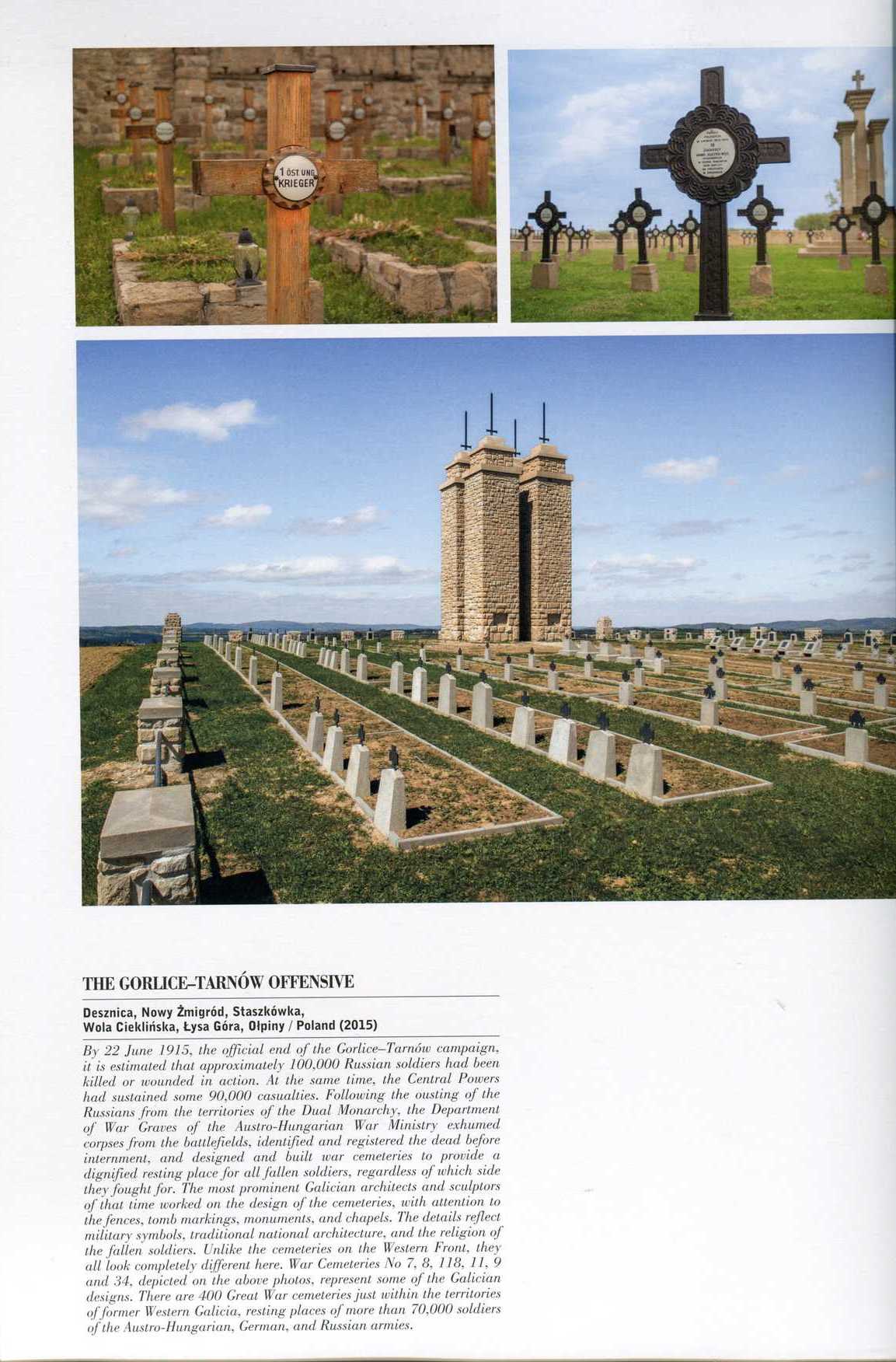
By June 1915, the Russians had sustained 100,000 casualties by the end of the Gorlice-Tarnow campaign, and the Central Powers some 90,000.
Austro-Hungary constructed some 400 cemeteries within western Galicia, today eastern Poland, but they are varied in design.
Western Galicia cemeteries (Eastern Poland today)
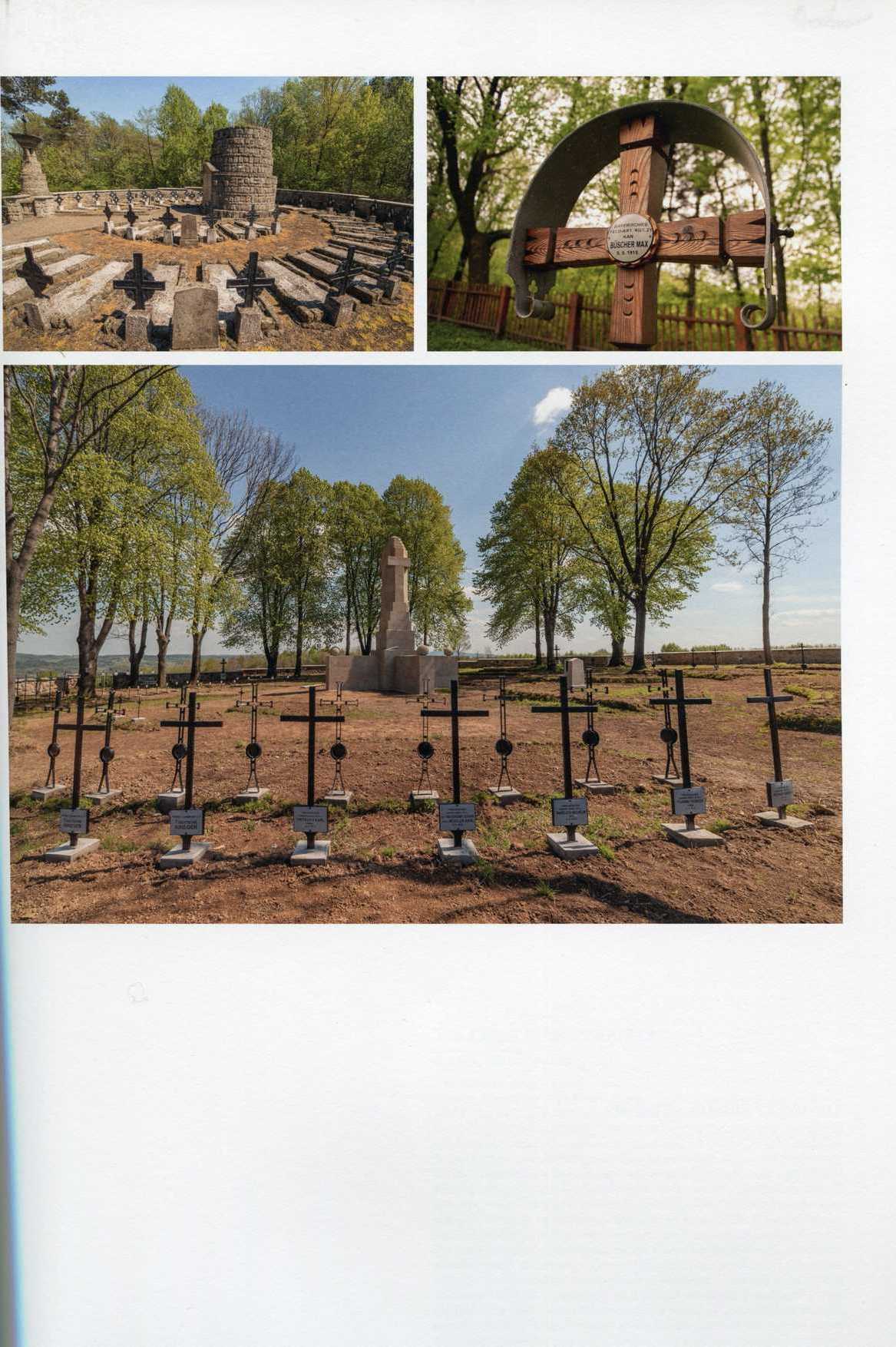
The Carpathian campaigns (Austro-Hungary and Russia) –Usok Pass
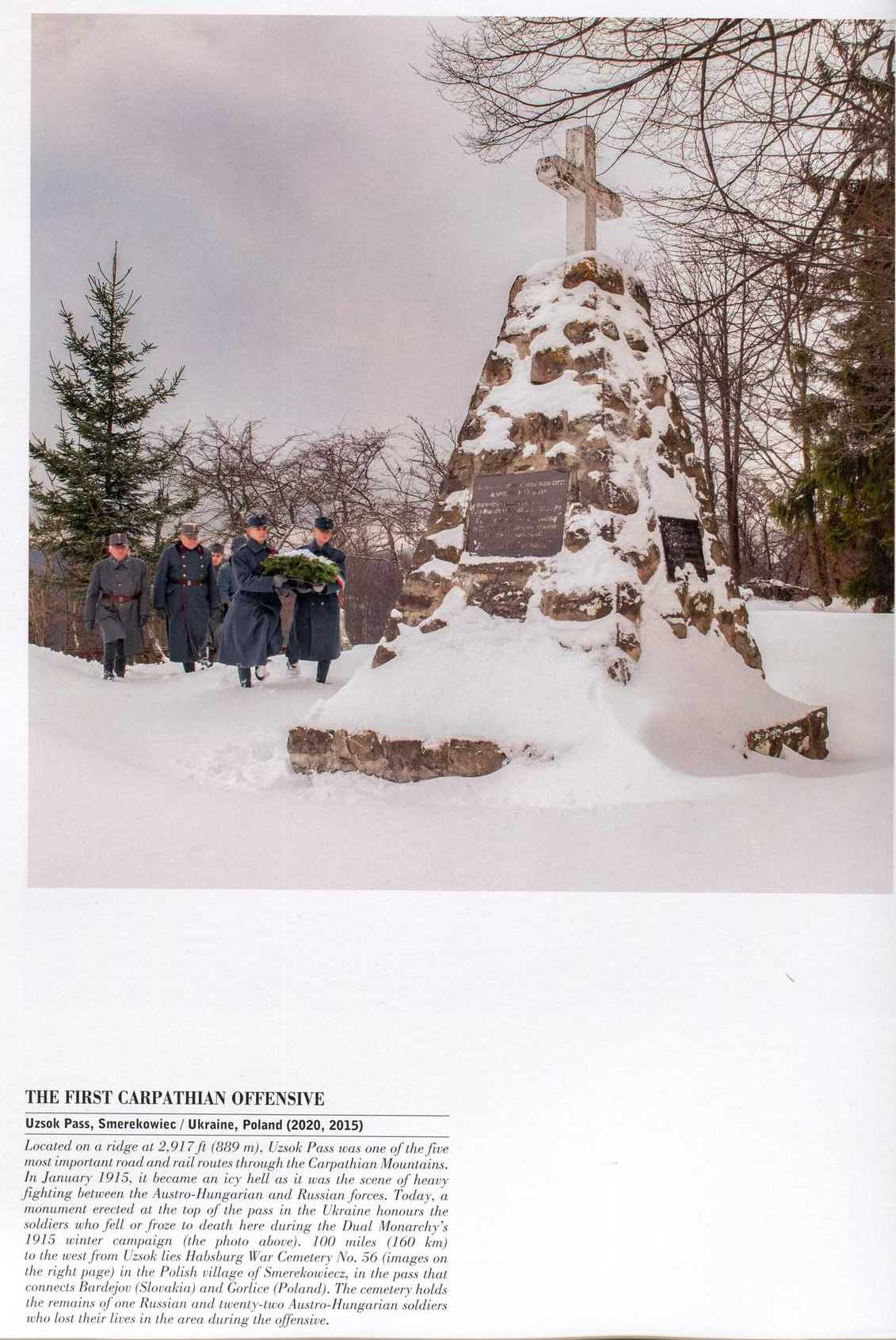
The memorial is at the top of the Usok Pass, today in the Ukraine. It is at 2917 feet. The battle was in January 1915, in atrocious conditions.
Carpathian campaigns 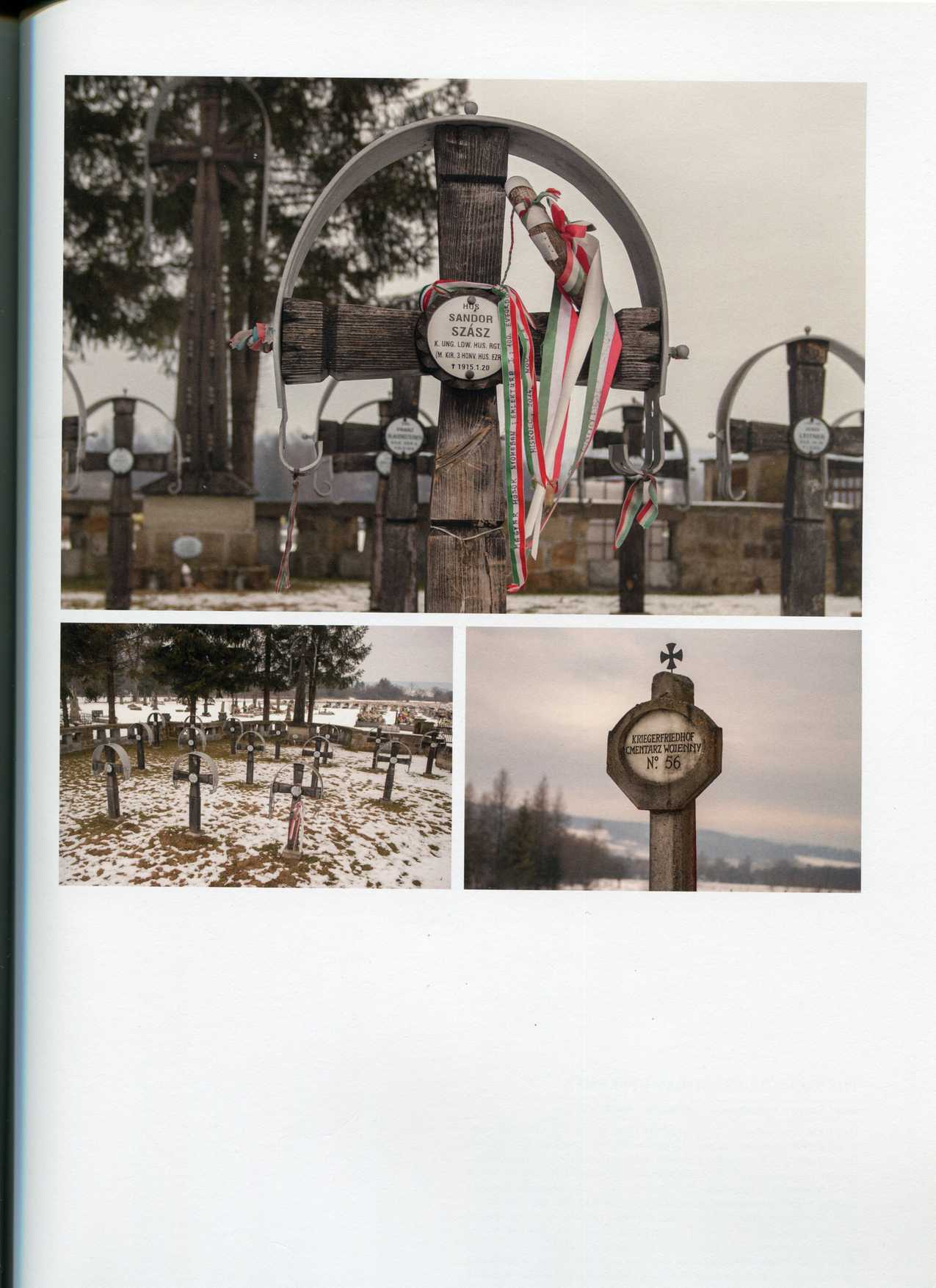
This cemetery lies 100 miles to the west of the Uzok pass. It is located in a pass that connects Gorlice, today in Poland, with Bardejov, today in Slovakia.
Red, white and green are the Hungarian national colours
Carpathian campaigns
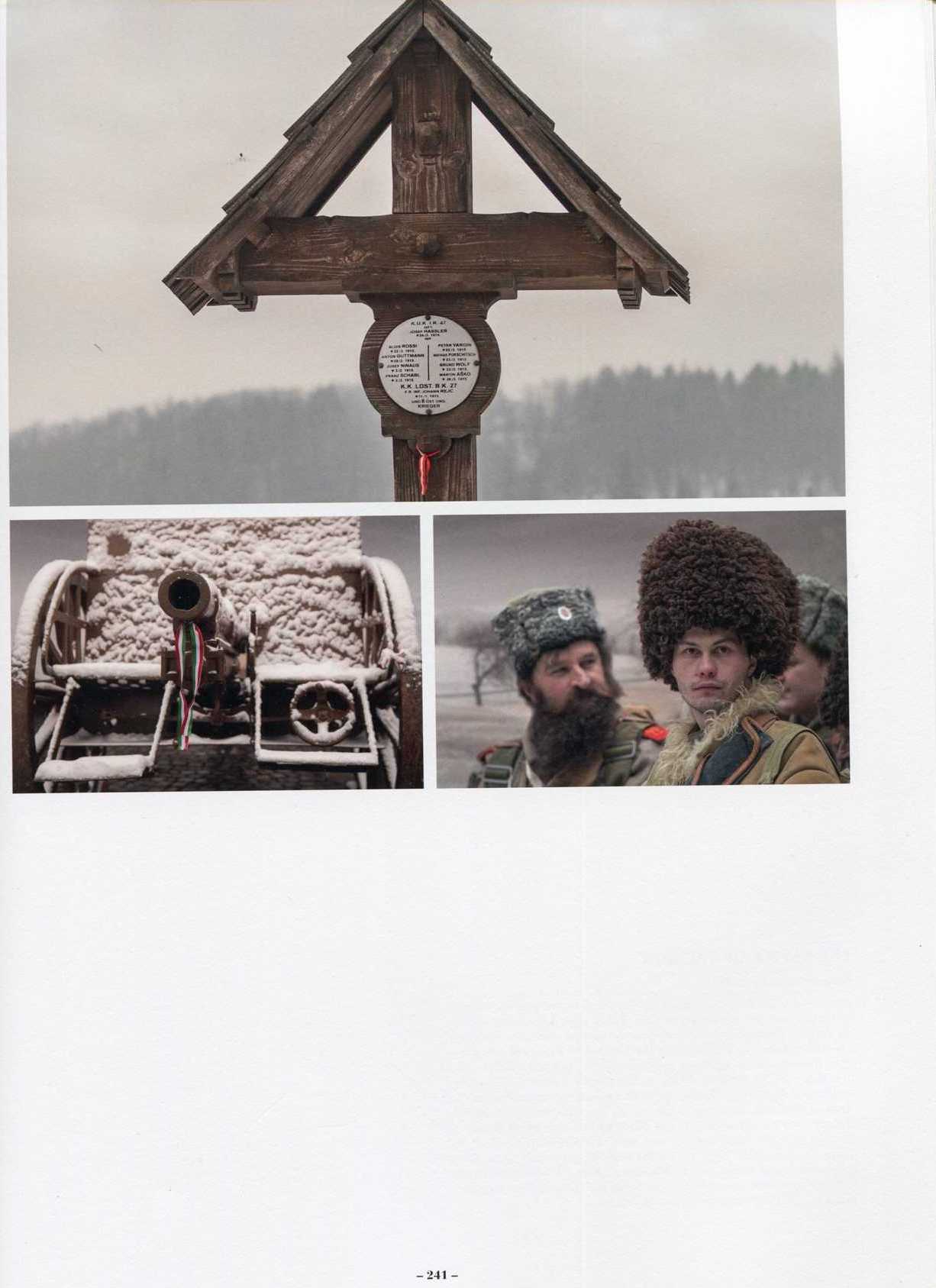
German South West Africa (Namibia) (South Africans and German forces)
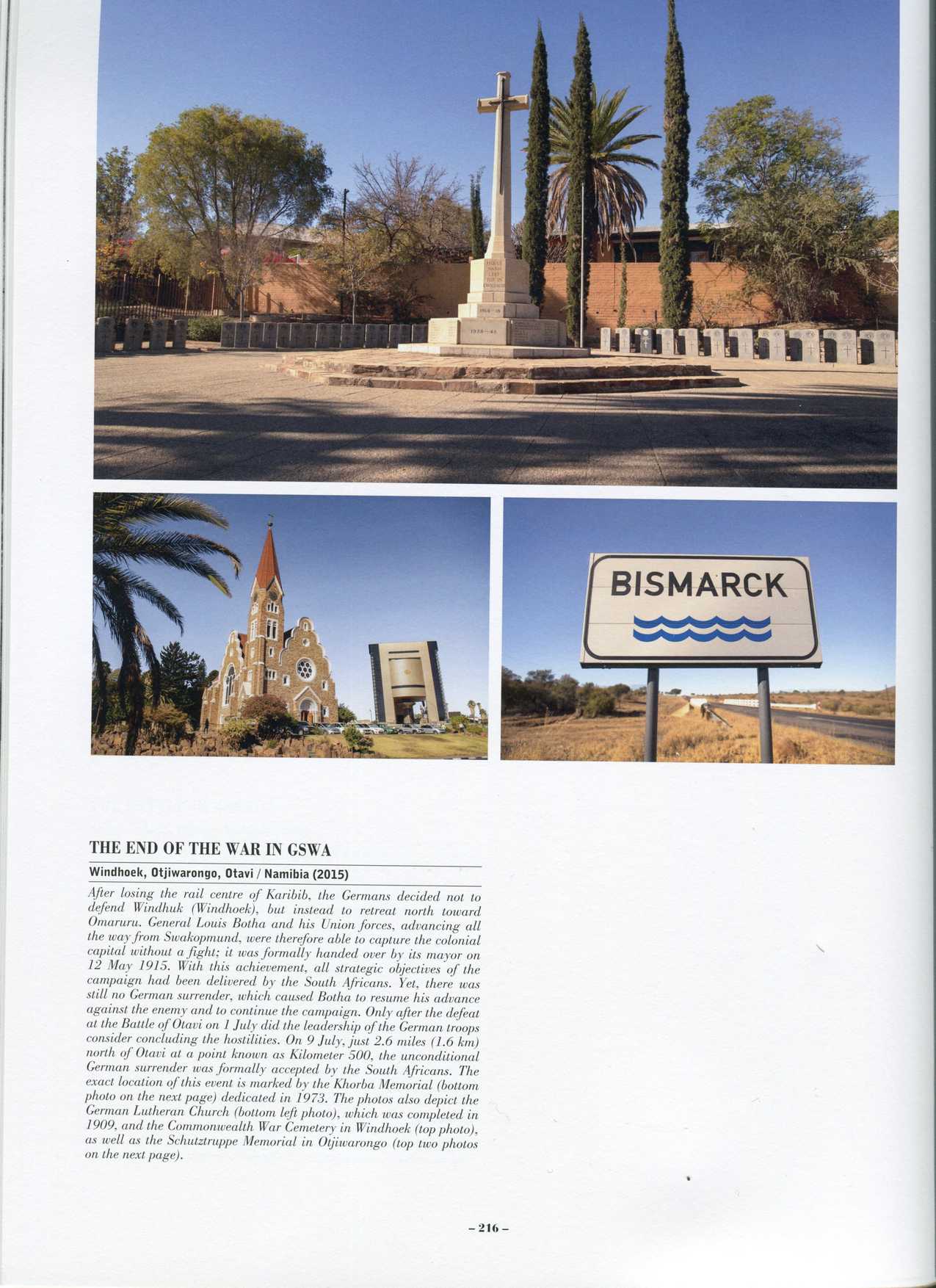
The campaign here ended with the defeat of the German forces, largely native troops, at the Battle of Otavi on 1st July 1915.
The German forces had not attempted to defend the capital Windhoek, so the South Afrcians under Louis Botha captured it without a fight.
The CWGC cemetery is at Windhoek (Namibia).
The church is a German Lutheran church built in 1909.
German South West Africa
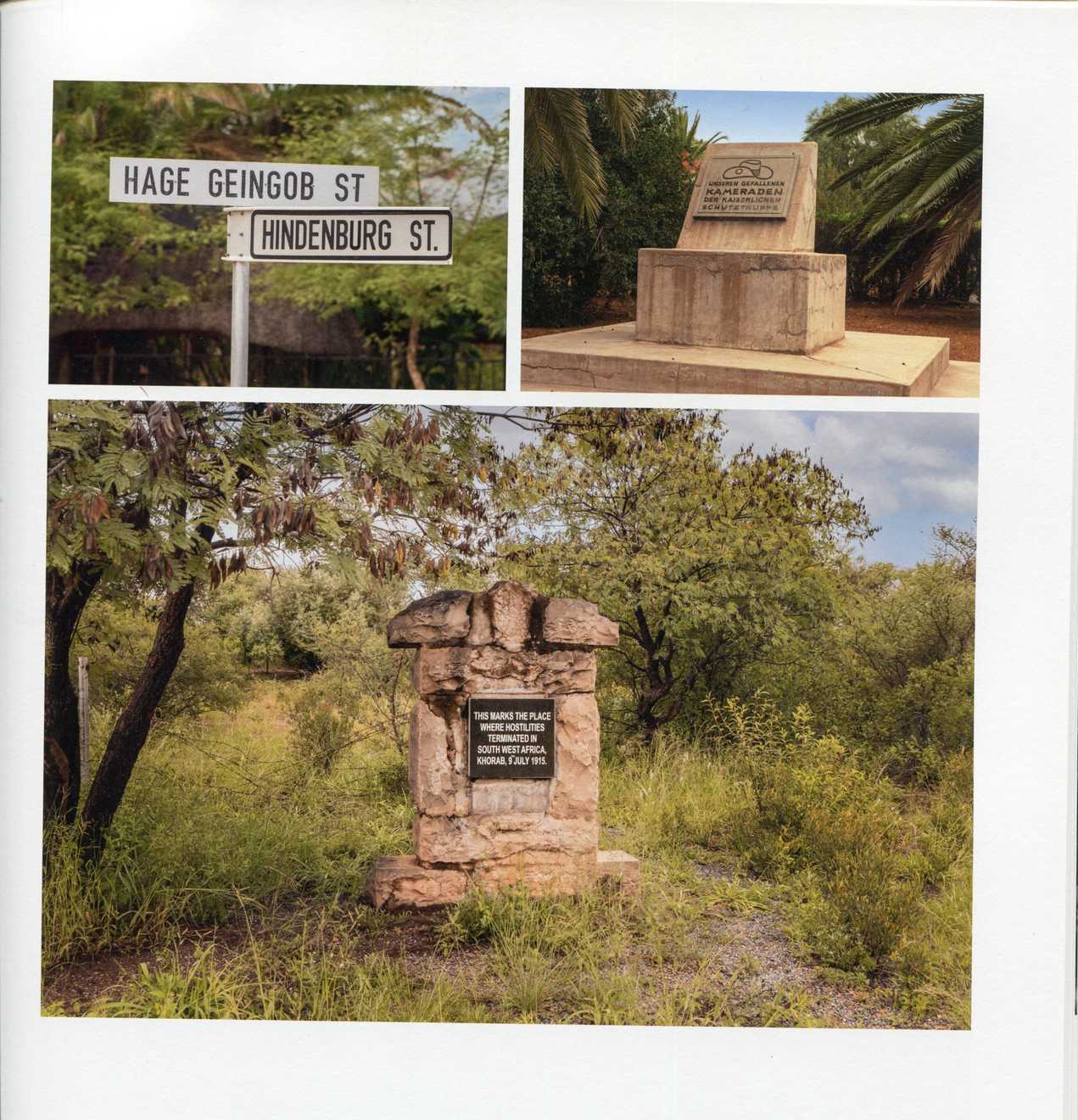
The Khorab memorial (bottom centre) marks the location of the surrender of German forces in South West Africa, 9th July 1915.
The Schutztruppe memorial (top right) is to German native African soldiers.
The Caucasus (Ottomans and Russia) 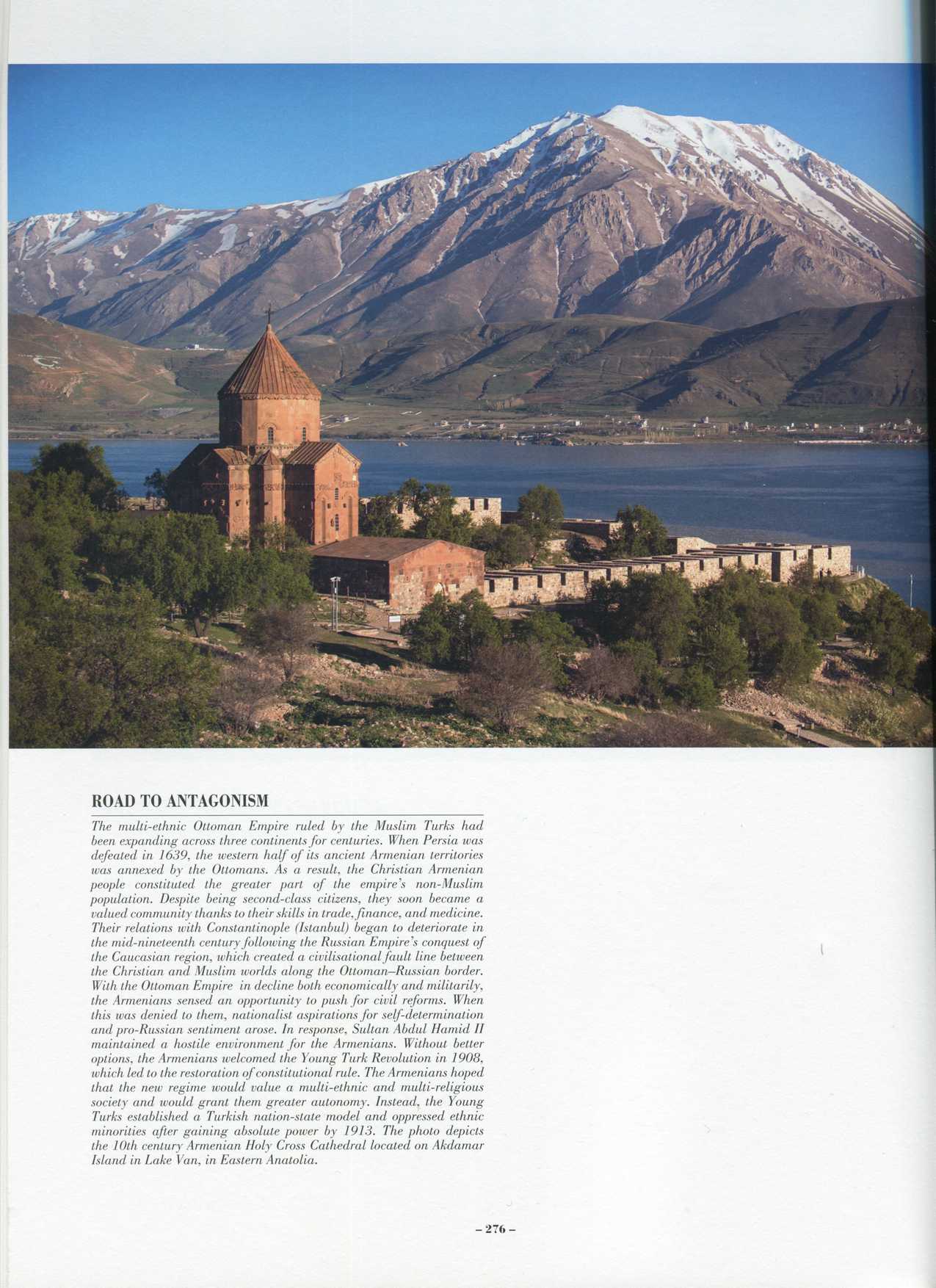
Lake Van and the Armenian cathedral, which are today in Turkey, not Armenia. It seems very unlikely that there is any Armenian population in the area now.
The Caucasus – the Trebizond (Trabzon) campaign
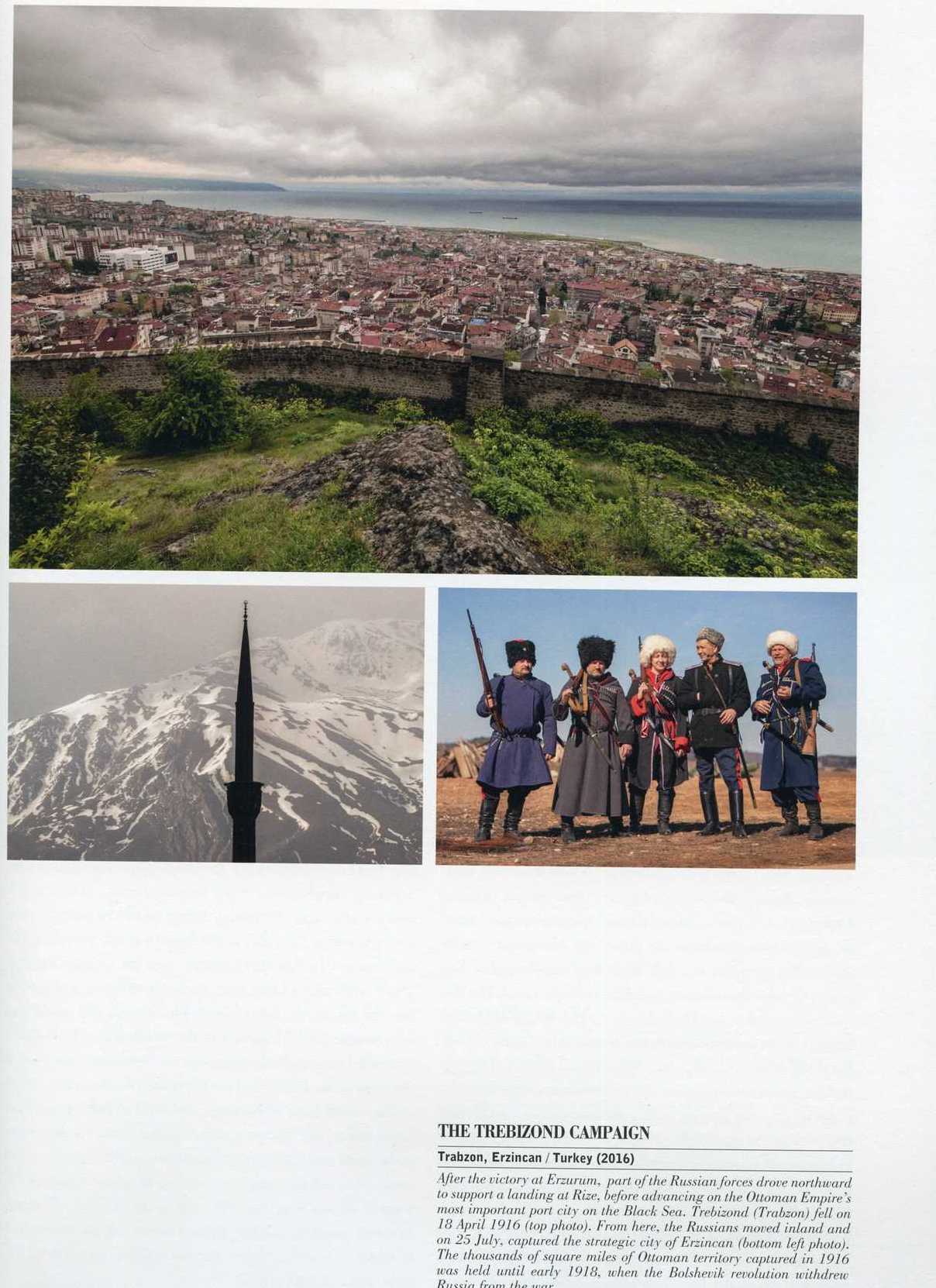 After their victory at Erzurum, see below, Russia captured thousands of square miles of Ottoman territory and the Black Sea port of Trebizond (top photo).
After their victory at Erzurum, see below, Russia captured thousands of square miles of Ottoman territory and the Black Sea port of Trebizond (top photo).
From there, they moved inland and captured the strategic city of Erzincan.
The Caucasus - The Russians attack Erzurum in January 1916
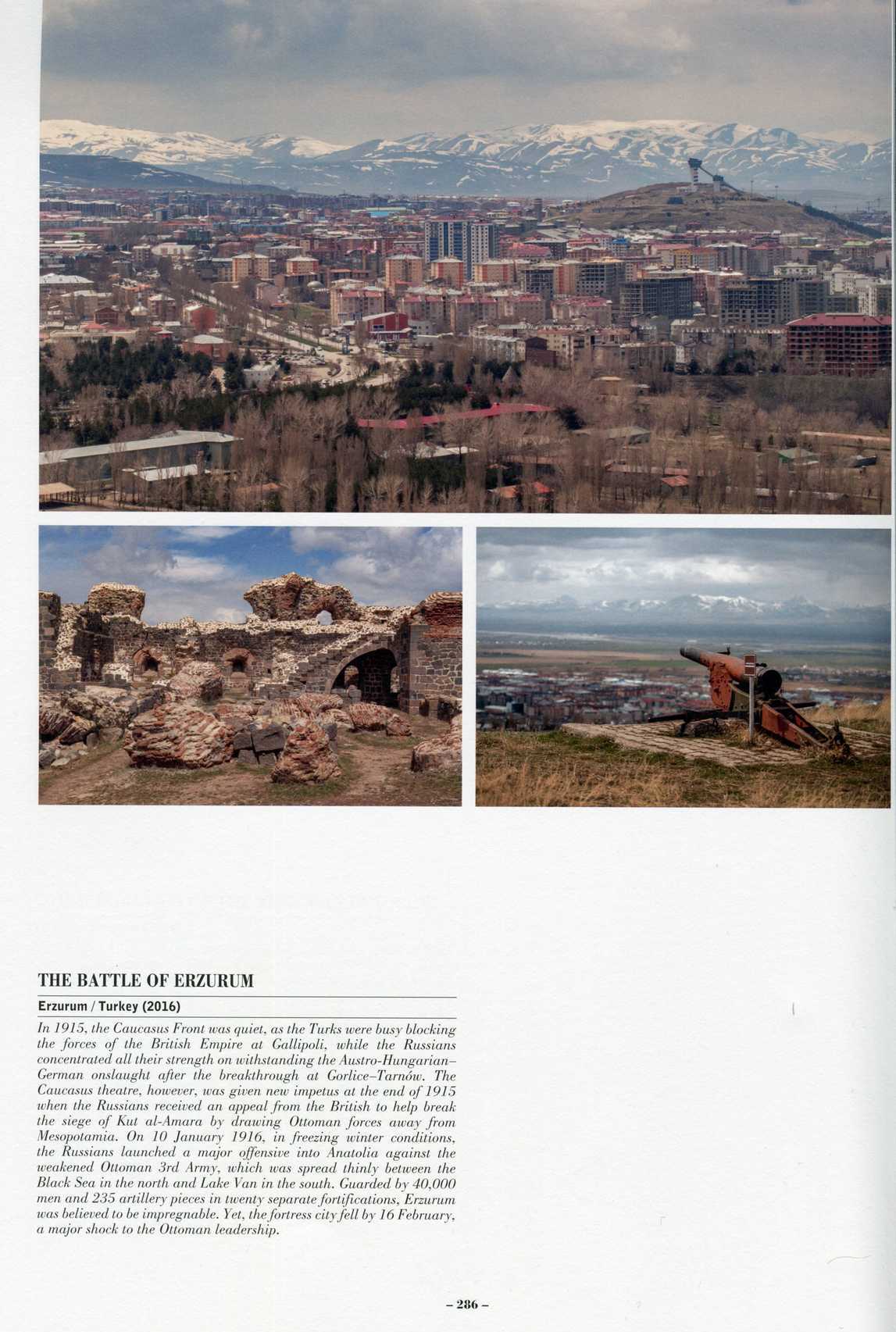
In January 1916, the Russians attacked the fortress city of Erzurum, which the Ottomans believed to be impregnable, and took it on 16th February 1916.